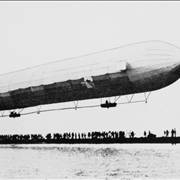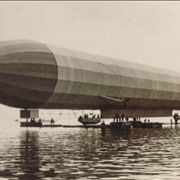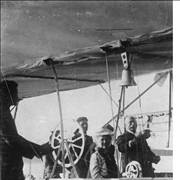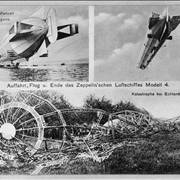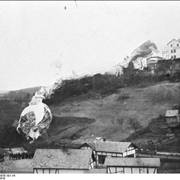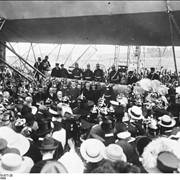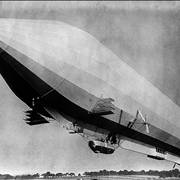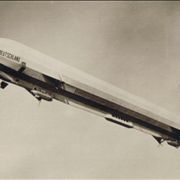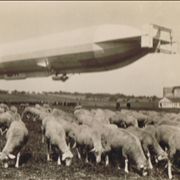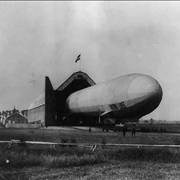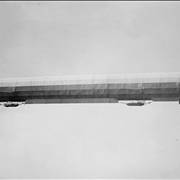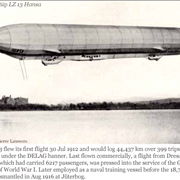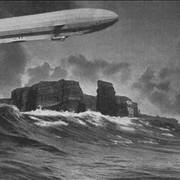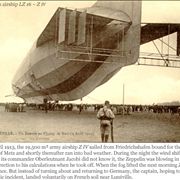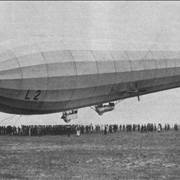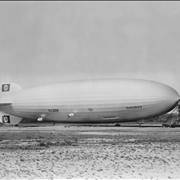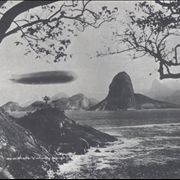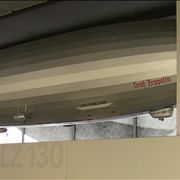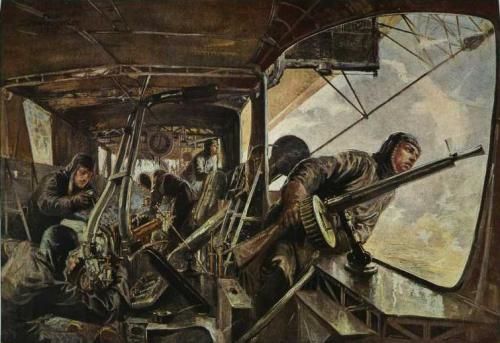Zeppelin Database - List of Zeppelins
Here is the list of zeppelins as well as some other types of rigid airships. Most of them are manufactured by the German Zeppelin companies from 1900 until 1938. This list will be constantly updated. Find out the details of each zeppelin you are interested.
LZ 1 Zeppelin
The Zeppelin LZ 1 was first successful German experimental rigid airship. It was first zeppelin flown from a floating hangar on Lake Constance in Germany on 2 July 1900. Read more about LZ 1.
LZ 2 Zeppelin
The LZ 2 was a German experimental rigid airship, manufactured by Luftschiffbau Zeppelin in 1906. This was first zeppelin that has common appearance of Zeppelin airship designs. Find out more detail about LZ 2 Zeppelin.
LZ 3 Zeppelin
The Zeppelin LZ 3 was a German experimental airship. It was constructed in Friedrichshafen under the direction of Ferdinand von Zeppelin. This zeppelin made many flights and carried a number of famous passengers, including the German Crown Prince. Read more about LZ 3.
LZ 4 Zeppelin
The Zeppelin LZ 4 was a German experimental airship. It was constructed under the direction of Ferdinand von Zeppelin. The successful first flights of LZ 3 in 1906 raised donations by the Reichstag and Count Zeppelin's work was started on a larger airship with a greater fuel capacity. Read more about LZ 4.
LZ 5 Zeppelin
The Zeppelin LZ 5 was a German experimental and military rigid airship. It was first flown on 26 May 1909. LZ5’s last flight was accident, when the mooring mast broke during a storm and wrecked near Weilburg on 25 March 1910. Read more about LZ 5.
LZ 6 Zeppelin
The Zeppelin LZ 6 was German experimental passenger-carrying airship. Its design included first experiments with wireless communication. LZ 6 was a first airship for DELAG – German Airship Transport Company. It was accidentally destroyed by fire in its hangar at Oos, Baden-Baden on 14 September 1910. Read more about LZ 6.
LZ 7 Zeppelin
The Zeppelin LZ 7 was a German civilian, passenger-carrying airship, constructed for DELAG. It was first flown on 19 June 1910. On 28 June 1910, LZ 7 was damaged beyond repair after crashing during a thunderstorm over the Teutoburg Forest. Read more about LZ 7.
LZ 8 Zeppelin
The Zeppelin LZ 8 was a German civilian rigid airship, constructed for DELAG. It was first flown on 30 March 1911. On 16 May 1911 it was caught by a strong crosswind while being walked out of its hangar and damaged beyond repair. Read more about LZ 8.
LZ 9 Zeppelin
The Zeppelin LZ 9 was a German military rigid airship. It was first flown on 2 October 1911. LZ 9 was decommissioned on 1 August 1914. Read more about LZ 9.
LZ 10 Zeppelin
The Zeppelin LZ 10 - Schwaben was called the "lucky airship" because she was more successful than any of the previous craft that DELAG had put into service. Also it was the first commercially successful passenger aircraft in history. LZ 10 - Schwaben made 218 flights, transporting 1,553 passengers including Crown Prince Wilhelm and his wife. Read more about LZ 10.
LZ 11 Zeppelin
The Zeppelin LZ 11 was a German civilian and military rigid airship. It was first flown on 19 February 1912 as DELAG’s passenger-carrying aircraft. Later it was used as military airship. LZ 11 was broke apart while being put into its hangar on 1 October 1915. Read more about LZ 11.
LZ 12 Zeppelin
The Zeppelin LZ 12 was a German military rigid airship. It was also called Z III. It was first flown on 25 April 1912. LZ 12 was decommissioned on 1 August 1914. Read more about LZ 12.
LZ 13 Zeppelin
The Zeppelin LZ 13 – Hansa was a German civilian and military airship first flown in 1912. It was built for DELAG to carry passengers and post. In 1913 it was taken over by the German Navy as a training craft and upon the outbreak of World War I it was requisitioned by the German military who used it for bombing, reconnaissance, and as a training airship. Read more about LZ 13.
LZ 14 Zeppelin
Zeppelin LZ 14 – L1 was a German military rigid airship first flown on 7 October 1912. This was the first Airship accident to cause fatalities. Read more about LZ 14.
LZ 15 Zeppelin
The Zeppelin LZ 15 - Ersatz Z I was a German military rigid airship first flown on 16 January 1913. It was destroyed on 19 March 1913 in a forced landing. Read more about LZ 15.
LZ 16 Zeppelin
The Zeppelin LZ 16 - Z IV was a German military rigid airship first flown on 14 March 1913. It was accidentally crossed the French border due to a navigational error caused by poor visibility. Later it was used for reconnaissance, bombing and training before being decommissioned in the autumn of 1916. Read more about LZ 16.
LZ 17 Zeppelin
The Zeppelin LZ 17- Sachsen was a German civilian passenger-carrying rigid airship first flown on 3 May 1913. It has transported 9,837 passengers in 419 flights, travelling 39,919 km. Later it was taken over by German military upon outbreak of World War I in 1914. It was decommissioned in autumn of 1916. Read more about Sachsen Zeppelin.
Lz 18 Zeppelin
The Zeppelin LZ 18 –L 2 was a German military rigid airship first flown on 9 September 1913. It was the second Zeppelin airship to be bought by the Imperial German Navy. On 17 October 1913 it caught fire and crashed and the entire crew was killed. Read more about LZ 18.
LZ 19 Zeppelin
The Zeppelin LZ 19 - Second Ersatz Z I was a German military rigid airship first flown on 6 June 1913. On 13 June 1914 it was damaged beyond repair after a forced landing. Read more about LZ 19.
LZ 20 Zeppelin
The Zeppelin LZ 20 - Z V was a German military rigid airship first flown on 8 July 1913. It was used in World War I for reconnaissance missions in Western Poland. After an attack on Mława during the Battle of Tannenberg it was forced landing due to damage from ground fire, its crew was captured. Read more about LZ 20.
LZ 129 Hindenburg
LZ 129 Hindenburg was one of the largest airships in the history and a marvel of technology at the time. It was able to pass the Atlantic faster than fastest transatlantic ships and it did 34 times. It also marked the end of the Era of the Zeppelins.
LZ 127 Graf Zeppelin
LZ 127 Graf Zeppelin was made in 1928 as a mean of restarting of German Zeppelin traffic after the World War One. It was the first aircraft in history to fly over a million miles; it flew around the world and to the Arctic and back.
LZ 130 Graf Zeppelin II
LZ 130 Graf Zeppelin II marks an end of one era - era of the great ships in the sky. After the Hindenburg crash and lack of helium it was prevented to carry passengers and given a very short life.
